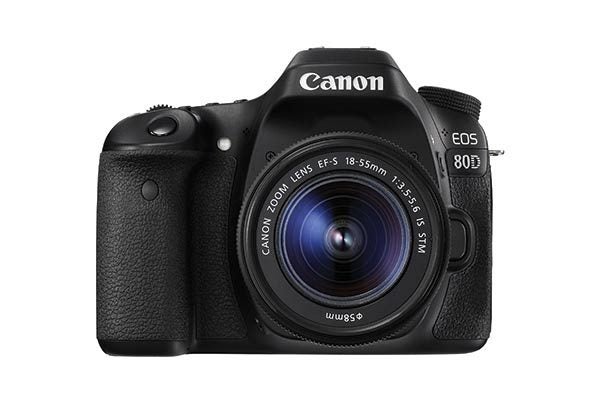With powerful sensors, superior build quality and a huge range of lenses, there are a bunch of reasons to make the jump to DSLR - but where should you start? We've rounded up our favourite 5 DSLRs, all available for under £1,000.
While many compact system cameras now employ APS-C sized sensors and can hold their own against DSLRs in terms of critical image quality, many enthusiasts still prefer a DSLR. Part of the reason is the much larger range of lenses available for DSLRs, including many specialist optics that are not available for CSCs. Also, while they are larger and heavier than CSCs, DSLRs are designed to sit comfortably in the hand and feel purpose-built for serious photography. The good news for users looking to upgrade or invest in their first DSLR is all the major manufacturers now offer models to cover all price points and ability levels. We’ve gathered together five of the best DSLRs under £1,000.
Key points
Sensor:
Most sub-£1,000 DSLRs employ APS-C sensors that are about 13 times larger in surface area that the 1/2.3in sensors of most compact cameras. A larger sensor means increased dynamic range and superior image quality (less noise) at higher sensitivity settings.
Optical viewfinder
Electronic viewfinder technology has made huge strides, but most photographers still prefer optical viewfinders. Barring Sony, all DSLRs have optical viewfinders.
Lens mount
When you buy a DSLR, you also gain access to a large range of lenses. While Canon and Nikon currently offer the biggest choice of DSLR lenses, Pentax and Sony also have a very wide selection, including many specialist optics.
Physical controls
DSLRs are designed to sit comfortably in the hand and allow you easy access to a wide range of physical controls. These enable you to quickly change settings without having to scroll through the menu.
Here’s our rundown of the best 5 on the market…
1. Canon EOS 80D
£99, body only
Read our full Canon EOS 80D review
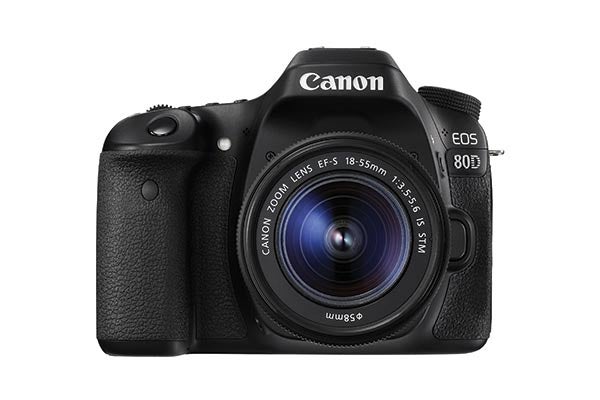
Key specs:
- Sensor: 24.2MP APS-C CMOS
- Sensitivity :ISO 100-16,000 (exp. to ISO 25,600)
- Rear display : 3in, 1.04m-dot touch-sensitive LCD
- Viewfinder: Pentaprism, 0.95x magnification, 100% coverage
- Dimensions: 139 x 105.2 x 78.5mm
- Weight: 730g with battery and card
The 80D builds on the strengths of its excellent predecessor – the 70D. The 80D retains the innovative Dual Pixel CMOS AF technology of the 70D, whereby each individual pixel on the sensor is split in two, allowing each pixel to ‘double up’ as both a traditional light-registering photodiode and as an on-sensor phase-detection AF point. This results in greatly enhanced AF performance when the camera is used in Live View and video recording mode – especially when live view mode is engaged to track moving subjects across the frame. Continuous autofocus (AI Servo) in live view was first seen on the EOS 760D, but is more fully realised with the 80D as users are now able to determine the speed of focus transitions via the custom function menu. Also the 80D offers 45 AF points (the 70D offered 19 points) spread across the viewfinder, all of which are cross-type.
Effective resolution is boosted from 20.2MP to 24.2MP, giving you more freedom to crop images without sacrificing detail. Canon has paired the new sensor with the slightly older (yet still powerful) DIGIC 6 image processor. While the newer DIGIC 7 chip might seem a more natural fit on paper, the DIGIC 6 enables the 80D to offer a top burst speed of 7fps, along with a native sensitivity of ISO 100-16,000, expandable to ISO 25,600. Metering is taken care of via the same 7,560-pixel RGB+IR metering module found on the 750D and 760D, and improves on the 70D’s older 63-zone dual-layer metering sensor.
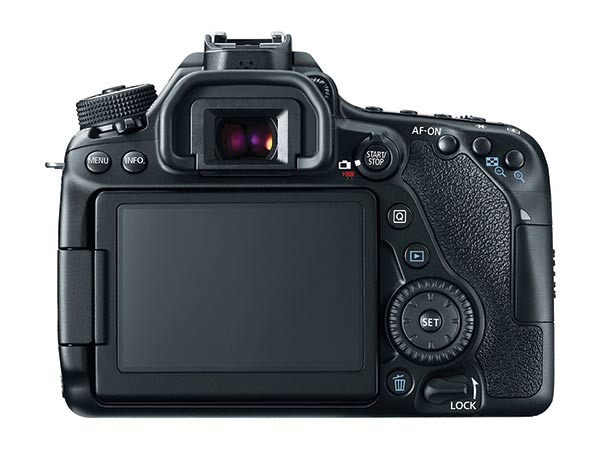
The optical viewfinder now offers 100% coverage with 0.95x magnification, and there’s a 3in vari-angle, 1.04m-dot touchscreen. The ability to set the display at just about any orientation and then operate the camera using the touchscreen adds great flexibility in everyday use. While the 80D doesn’t offer 4K video capture, you can shoot Full HD video at up to 60 progressive frames per second in MP4 or .MOV format. Unlike the 70D the 80D includes a dedicated headphone socket for real-time monitoring of audio levels. The 80D also has built-in Wi-fi and NFC.
The 80D feels reassuringly solid, and despite the lack of weather sealing the 80D’s aluminium and polycarbonate resin construction feels tough enough to protect the camera from bumps and scrapes. Our only niggle is that Canon opted for a single SD card slot, as opposed to the twin slots more commonly found on DSLRs of this calibre.
Image quality is excellent. While Canon has opted to keep the anti-aliasing filter intact on the 80D its higher-resolution sensor resolves excellent levels of fine detail, especially at ISO 100-1600. Beyond this, noise begins to creep in, to the detriment of fine detail, but images are still usable straight out of the camera at ISO 3200 and ISO 6400.
Verdict:
Features: 18/20
Performance: 19/20
Design: 18/20
Image quality: 19/20
Value: 18/20
While the 80D isn’t quite as revolutionary as its predecessor, it certainly improves on the 70D in a number of key areas including AF performance and accuracy, effective resolution and video recording. Likewise, build quality remains excellent despite the lack of weather sealing. For advanced amateurs and enthusiast photographers, the 80D is a superb APS-C DSLR that’s well worth taking a closer look at if your budget will stretch that far.
Score: 5 out of 5
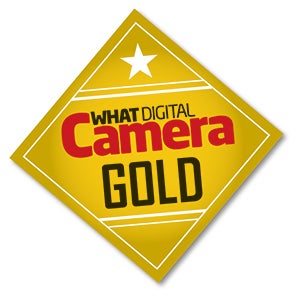
2. Nikon D610
£999, body only
Read our full Nikon D610 review
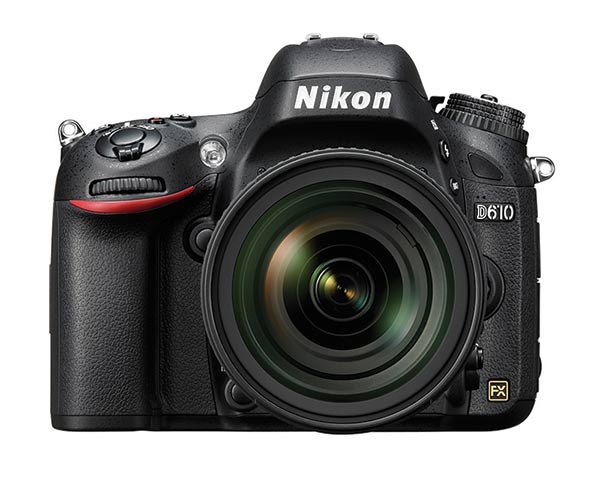
Key specs:
- Sensor: 24.3MP full-frame (35.9 x 24.0mm) CMOS
- Sensitivity: ISO 100-6,400 (exp. to ISO 50-25,600)
- Rear display: 3.2in, 921k-dot LCD
- Viewfinder: Pentaprism finder, 0.7x magnification, 100% coverage
- Dimensions: 141 x 113 x 82mm
- Weight: 850g with battery and card
The D610 is the only camera in this Top Five that has a full-frame sensor. Released last year at £1,799 body only, it’s now possible to buy a brand new D610 body for just under £1,000. While this is hardly an insignificant amount, it’s worth remembering that only a few years ago you wouldn’t get much (if any) change from £2,000 for a full-frame DSLR. If you have your heart set on a brand new DSLR and you’re looking to make the move up to a full-frame sensor then the Nikon D610 is about as affordable as it gets. It is also an excellent camera in its own right.
Brought out to replace the Nikon D600 barely a year after its release, the D610’s headline specs are almost identical with the only major differences being a slightly faster maximum continuous speed and the addition of a ‘Quiet’ shutter mode. The D610’s impressive specification includes a 24.3MP full-frame CMOS sensor and a native sensitivity range of ISO 100-6400, expandable to an ISO equivalent of 50-25,600. This is complemented by a 39-point AF system, that includes nine cross-type points in the centre for improved AF performance.
The optical viewfinder provides 100% coverage at 0.7x magnification, and there’s a 3.2in, 921k-dot LCD. The D610 feels especially solid, thanks to its largely magnesium-alloy construction. While it doesn’t quite have the same bombproof feel as the more expensive D810, it still offers weather-sealing to protect it from dust and moisture. Image quality is excellent, with accurate exposure metering and consistent white balance. Noise is also especially well controlled, even when shooting at higher sensitivity settings.
Verdict:
Features: 18/20
Performance: 18/20
Design: 18/20
Image quality: 19/20
Value: 19/20
While the reputation of the D600 was somewhat tarnished by reports of dust spots appearing on the sensor, there have been no such problems reported with the D610. It’s an excellent camera that delivers plenty of flexibility and full-frame image quality at a very competitive price. If you’re after a full-frame sensor DSLR on a budget the Nikon D610 is probably your best bet.
Score: 5 out of 5

3. Sony A77 II
£795, body only
Read our full Sony A77 II review
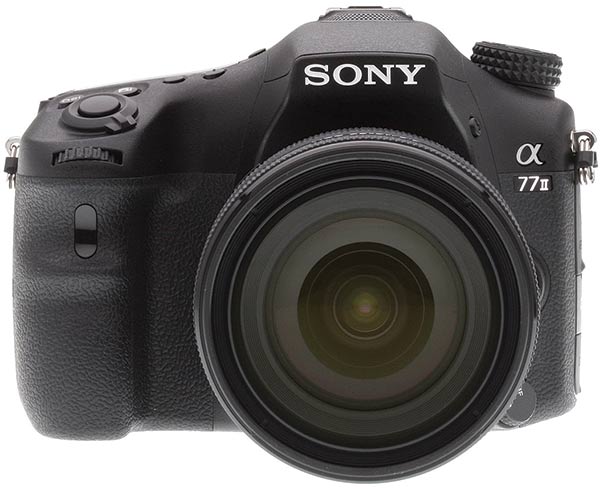
Key specs:
- Sensor: 24.3MP APS-C CMOS
- Sensitivity ISO 50-25,600
- Rear display: 3in, 1.23m-dot tiltable
- LCD Viewfinder: 0.5in EVF type, 0.71x magnification, 100% coverage
- Dimensions: 142.6 x 104.2 x 80.9mm
- Weight 647g with battery and card
Released in summer 2014 to replace 2011’s original A77, the Sony A77 II has a 24.3MP APS-C CMOS sensor and Sony’s proprietary BIONZ X image processor. Its 12fps maximum continuous shooting speed and 79-point AF system still hold up remarkably well against more modern competitor cameras. If you regularly shoot fast-moving action, the A77 II’s impressive AF tracking abilities and zippy burst speed mark it out as a strong candidate.
Elsewhere, the A77 II has built-in Wi-fi and NFC connectivity that allows you to pair the camera directly to a smartphone or tablet via Sony’s free PlayMemories app for direct image transfer and remote control duties. Unlike its predecessor, however, the A77 II doesn’t have a built-in GPS module. On the back you’ll find a tiltable 3in/1.23m-dot LCD, which is still one of the sharpest displays found on any consumer-grade DSLR. Above this sits a 2.39m-dot OLED electronic viewfinder that provides 100% coverage – its clear and bright window is a perfect example of how far EVF technology has evolved.
The body of the A77 II is encased in a magnesium-alloy shell and finished with tough polycarbonate. The body is also weather sealed against water and dust penetration, allowing it to be used with confidence in adverse weather. At around 647g (body only) the A77 II is by no means the lightest camera around. Image quality impresses, with the 1,200-zone metering system providing accurate exposures in a range of conditions as does the auto white balance. As you’d expect, colour can be adjusted to your preferences, however on the standard setting we found that it delivered punchy, rich images.
Verdict:
Features: 19/20
Performance: 18/20
Design: 19/20
Image quality: 18/20
Value: 18/20
The A77 II offers solid build quality, great handling and is simple to use. Despite being one of the older models in this month’s round-up, it remains an excellent interchangeable-lens camera that is particularly well suited to capturing sports and other fast-moving action. Its construction and weather sealing also make it an especially tough camera that can handle bad weather.
Score: 5 out of 5

4. Pentax K-3 II
£710, body only
Read our full Pentax K-3 II review

Key specs:
- Sensor: 24.35MP APS-C CMOS
- Sensitivity: ISO 100-51,200
- Rear display: 3.2in, 1.23m-dot LCD Viewfinder
- Pentaprism finder, 0.95x magnification, approx 100% coverage
- Dimensions: 131.5 x 102.5 x 77.5mm
- Weight: 785g with battery and card
Launched in 2015 to succeed the widely acclaimed K-3, the K-3 II is Pentax’s flagship APS-C DSLR, with only the full-frame K-1 positioned above it. With a 24.35MP CMOS sensor and Pentax’s proprietary PRIME III image processor, the K-3 II offers a maximum continuous shooting speed of 8.3fps. As is the fashion these days, the anti-aliasing filter has been removed for enhanced fine detail, though in order to counter effects of moiré patterning this can lead to, the K-3 II has an ingenious anti-aliasing simulator. This uses the camera’s built-in image stabilisation to mimic the effect of an anti-aliasing filter to minimise moiré in certain situations. It can be employed in two strength levels or switched off altogether.
Whereas Nikon and Canon only equip selected lenses with image stabilisation, Pentax builds its Shake Reduction system into its camera bodies, meaning you can enjoy its benefits regardless of the lens you have attached. For the K-3 II, Shake Reduction now offers 4.5 stops of compensation compared to 3.5 stops on the K-3. While there’s no built-in Wi-fi or NFC connectivity, the K-3 II can be used with Eyefi SD cards and Pentax flucards for full wireless functionality. Also, there’s an integrated GPS module, and an electronic compass. As this is housed inside the camera’s roof, the pop-up flash has been removed.
Finally, the K-3 II’s Pixel Shift Resolution System can be used to reduce noise in high ISO images. It basically captures four consecutive images of the same scene, each of which is shifted by a single pixel. The four images are then synthesised into one composite image with enhanced colour and greatly reduced noise.
Verdict:
Features: 18/20
Performance: 18/20
Design: 17/20
Image quality: 18/20
Value: 19/20
Pentax has gained a deserved reputation for well-made and generously featured DSLRs that offer excellent value for money. The K-3 II continues this trend and is one of the best DSLRs Pentax has ever made. Traditional Pentax DSLR features such as a metal chassis and weather sealing are complemented by a strong feature set and great handling. Well worth a closer look.
Score: 4.5 out of 5
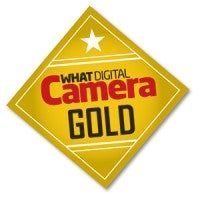
5. Nikon D7200
£715, body only
Read our full Nikon D7200 review
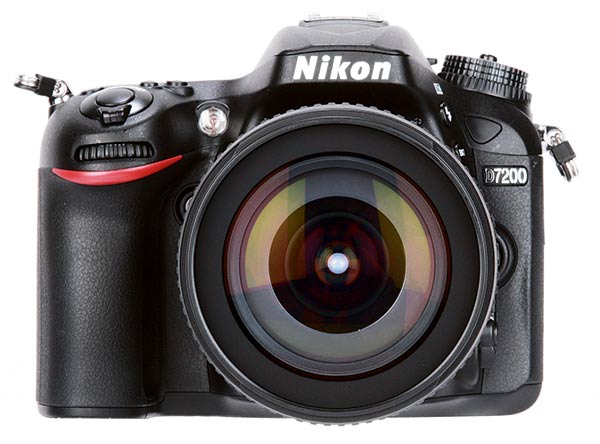
Key specs:
- Sensor: 24.2MP APS-C CMOS
- Sensitivity: ISO 100-25,600 (exp. to ISO 102,000)
- Rear display: 3.2in, 1.22m-dot LCD
- Viewfinder: Pentaprism finder, 0.94x magnification, 100% coverage
- Dimensions: 135.5 x 106.5 x 76mm
- Weight: 765g with card and battery
Introduced in 2015 to replace 2013’s highly regarded D7100, the D7200 is near the top of Nikon’s APS-C DSLR range, just below the recently released 20MP D500 (£1,730 body only), Nikon’s flagship APS-C DSLR. The D7200 isn’t hugely different from the D7100 in terms of headline spec, but it has a faster EXPEED 4 image processor that affords it some subtle improvements including a top burst speed of 6fps and a higher buffer capacity, a slightly higher native sensitivity range, and slightly snappier general operation. In keeping with other mid-range Nikon DSLRs, the D7200 has also had its anti-aliasing filter removed for better sharpness and enhanced resolution of fine detail.
Elsewhere, the D7200 benefits from the same Multi-Cam 3500 II autofocus module employed by the much more expensive D810, which provides 51 AF points including 15 cross-type sensors for speedier AF performance regardless of camera orientation. A fixed 3.2in, 1.22m-dot LCD produces good contrast and detail, and is easily viewed in bright sunlight. Above this, the pentaprism viewfinder is bright and clear, and offers 100% coverage.
Build quality is solid, with the back and top protected by a magnesium alloy shell, while the rest of the camera is finished in tough polycarbonate plastic to produce a tough yet relatively lightweight camera. The D7200 is also sealed against dust and moisture.
The D7200 produces accurate, punchy and lifelike images, while the auto white balance provides true-to-life colour. As for exposure metering, the 2016-pixel RGB sensor gives consistently accurate results. Noise is also well controlled, especially at ISO 3200 and 6400.
Verdict:
Features: 17/20
Performance: 18/20
Design: 18/20
Image quality: 18/20
Value: 17/20
If your budget won’t stretch to the asking price of the newer D500, then the D7200 remains an excellent choice for anyone seeking a flexible and well-specced enthusiast-level DSLR. The D7200 packs plenty of functionality into a reasonably compact body along with a superb AF system. Most importantly, the D7200 is capable of consistently excellent image quality.
Score: 4 out of 5






